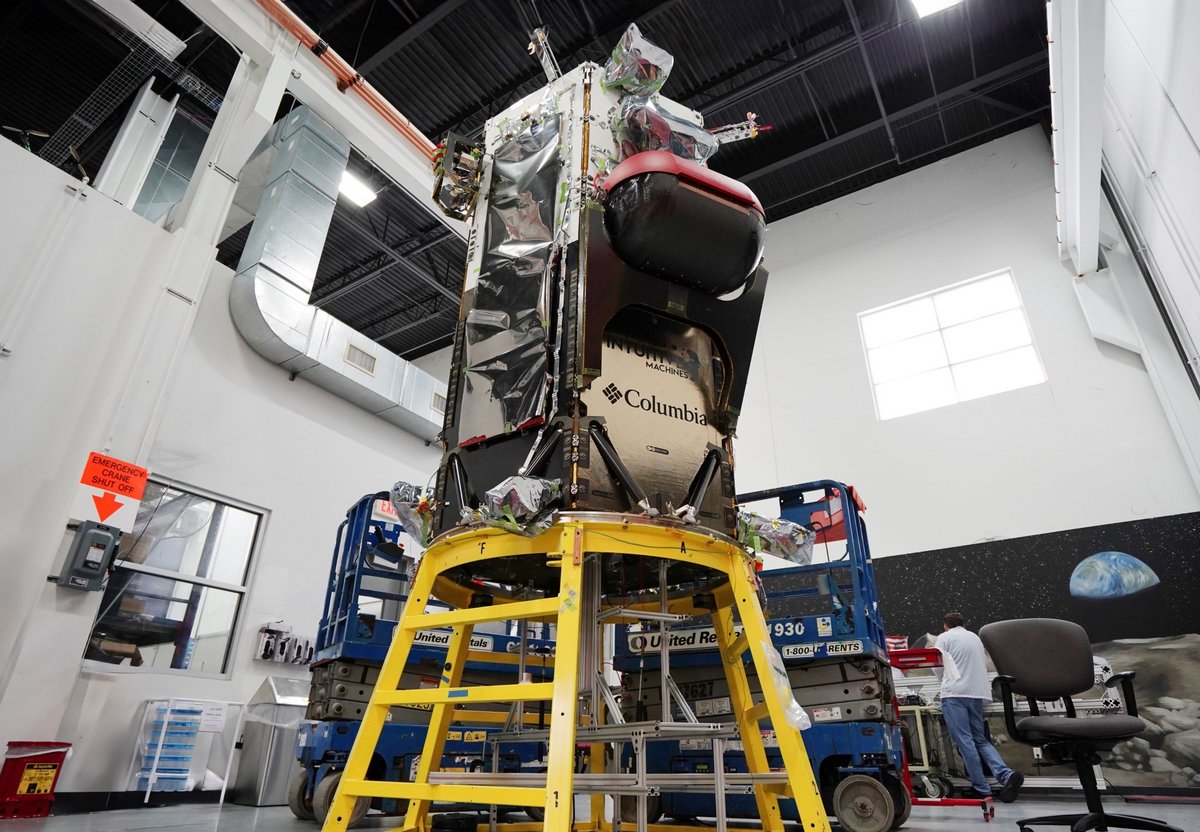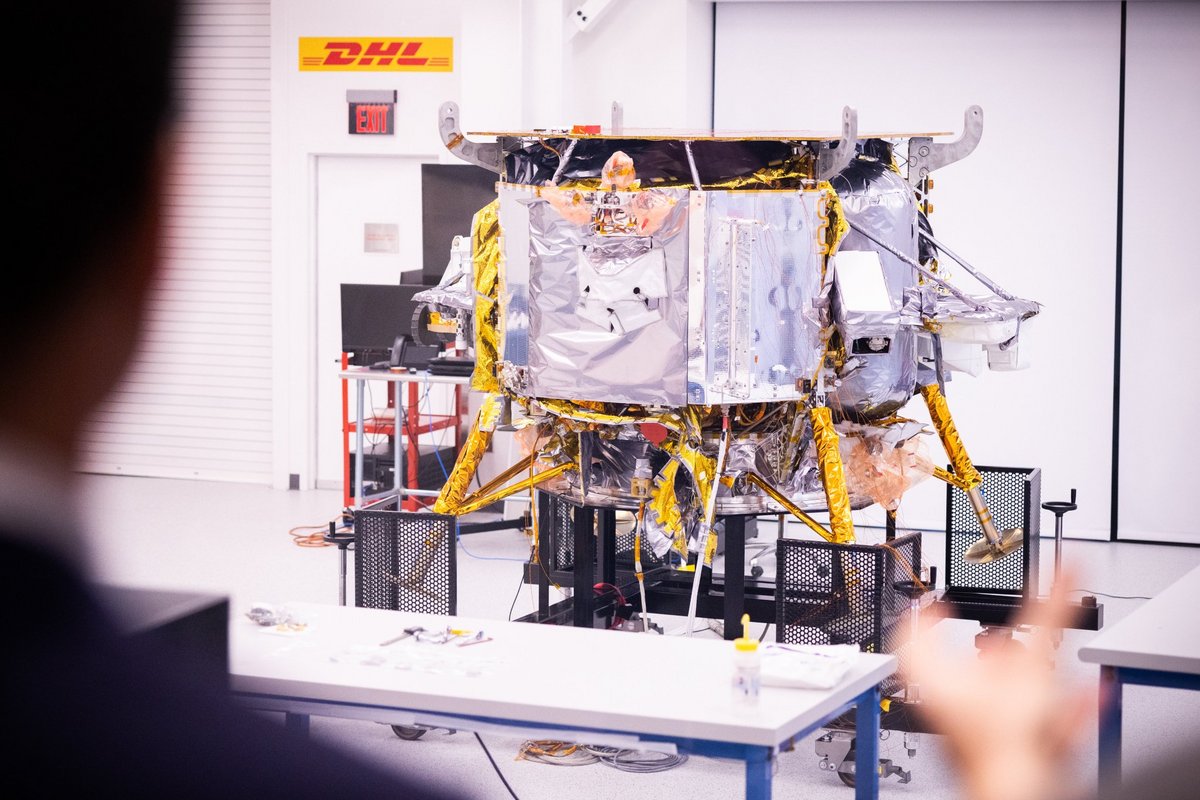In recent years, we have witnessed a anthology of attempts to put robots on the Moon. But the big absentees are the United States! The missions are in preparation, and the technological jewels of public-private actors are ready to go. Will they do better than the others? Not sure…
After a failure in 2019, India succeeded in landing on the Moon this summer. China, after an incredible series of missions, is preparing its most ambitious adventure for next year. Israel and Japan (whose SLIM mission is underway) have in turn attempted to send robots to land gently on the Selene surface. The fact remains that since 1972, the nation that has explored the Solar System the most has not sent anything to our natural satellite. An abnormality ? Certainly, but it won’t last.
An almost unexpected transition to public-private
We would forget it, but in the 2000s, NASA initiated several lunar missions, including orbiters, an impactor and the very high resolution observation satellite LRO (Lunar Reconnaissance Orbiter). This was to serve the Constellation lunar “reconquest” program, which ultimately collapsed for budgetary and technical reasons at the turn of the 2010s.
This judgment has de facto canceled many projects dedicated to studying the surface by landing there, including rovers. We then found these projects in another form, planned for the end of the 2010 decade. But all this was becoming expensive, and the NASA administration under Donald Trump, while launching the Artemis program, decided to change the entire architecture of robotic projects concerning the lunar surface. This is the public-private CLPS program.
CLPS, or Commercial Lunar Payload Services, is, in principle, quite simple. This support for industry means that NASA no longer develops vehicles to conduct its experiments, rovers or other payloads on the lunar surface, but buys its places on private missions. The American agency agrees to pay a “premium” rate to cover part of the development of the vehicles, but it is up to the operators and the industry to adapt to the prices or to discover new commercial outlets.
As it stands, finding customers who want to buy space and mass on a lunar lander is a real priesthood. Apart from a few nations (such as the United Arab Emirates, the United Kingdom or Australia) which benefit from these trips, private actors are not rushing. Consequently, manufacturers involved with NASA, especially start-ups and small structures, have had great difficulty financing the development of their lunar vehicles. Thus, Orbit Beyond, which was one of those selected, withdrew from its CLPS contract, due to lack of means to succeed in the mission. Masten Space went bankrupt.
(Also) a story about rockets
Is there no risk that the missions will fail around or on the Moon because they were financed at rock bottom prices by private operators who had difficulty raising the funds? This is a very real possibility, and reality shows that “low cost” attempts have not yet succeeded in conquering the Moon, with the failures of Beresheet (2019) and Hakuto-R (2023) . In 2022, NASA’s scientific manager, Thomas Zurbuchen, explained that he expected to see a failure rate of around 50% on future CLPS missions!
But there is another effect on savings: the availability of rockets. We talk about it regularly, apart from SpaceX which takes off once or twice a week, the world lacks sufficiently capable launchers. So, to save money, Astrobotic bought its place on the inaugural takeoff of the American Vulcan rocket. Bad luck, the lander would have been ready for months, but United Launch Alliance is very late in putting its new launcher into service…
Nova-C will ultimately be the first?
The various CLPS companies ended up regularly announcing their takeoff to the Moon “ in 6 months » to finally postpone the date. But Intuitive Machines recently stood out from the crowd with its Nova-C lander and its IM-1 mission. The Houston-based company announced that its vehicle was ready, and even gave the date of its planned takeoff with a SpaceX Falcon 9 rocket, November 16.
Please note that if, for one reason or another, the lunar lander or the rocket were not ready in time, another firing window is planned for December. Nova-C is an imposing vehicle, weighing 1.9 tonnes at takeoff and measuring 3 meters high. It carries 11 payloads of different sizes, including 5 NASA experiments and 6 “cargo ships”, including a small sculpture by Jeff Koons.
Intuitive Machines, through its general manager Steve Altemus, declared itself optimistic about its chances of succeeding in landing. The additional years spent on the ground helped the company to refine its piloting algorithm in particular. And the errors that other vehicles made (like Luna 25 or Hakuto-R) were simulated so that Nova-C knows how to behave in these specific situations, but which can quickly be fatal. As the first American vehicle to attempt to land there since 1972, however, there will be some pressure on its shoulders!

Astrobotic in ambush
NASA has signed several CLPS contracts. In addition to Intuitive Machines’ first mission (IM-1 cost US taxpayers $77 million), Firefly Aerospace, Draper and Astrobotics all have similar contracts. The Japanese company iSpace, which is preparing the successor to its Hakuto-R lander, is also participating in the program.
So, we can expect 5 to 6 robotic missions in the next 3 or 4 years, ordered solely for American needs. A windfall, even before the astronauts return to set foot there. It is likely that Astrobotic will be the second company to attempt the adventure, with its small Peregrine lander which is already ready (its engines are still missing, but they will be assembled in Florida just before assembly with the launcher) . As soon as Vulcan begins its first flight campaign, we will see Peregrine again in the spotlight.
Peregrine weighs 1.3 tonnes, and it is a little more compact than its competitor Nova-C, although its characteristics are similar for carrying payloads. Astrobotic, however, managed to attract private sponsors for its mission, partially financed thanks to an agreement with the logistician DHL. Like Intuitive Machines, Astrobotic is already planning 2 to 3 missions for its vehicle. From there to knowing if he will manage to land on his side…

Delays, yes, but successes?
Between the delays in this program (originally, checks from NASA were to serve as incentives, and the vehicles were supposed to take off from 2019) and the uncertainties about potential future successes, missing one or more missions could cost very expensive for these small start-ups. NASA’s bet is that this will not affect its ability to send lunar missions or public perception.
However, we can ask ourselves the question, the widely reported adventures of India and China having traveled the world. Better, by building internally a real series of missions, each more ambitious than the other, China with its Chang’E program now has tools that neither NASA nor private operators can provide.

Next year, when the first CLPS missions take place, China is expected to send its second communications relay to the far side of the Moon before landing the Chang’E 6 mission, which will dig down and return to Earth the very first samples from the other side of our satellite. Private or not, NASA will have to strengthen its robotic missions!

3